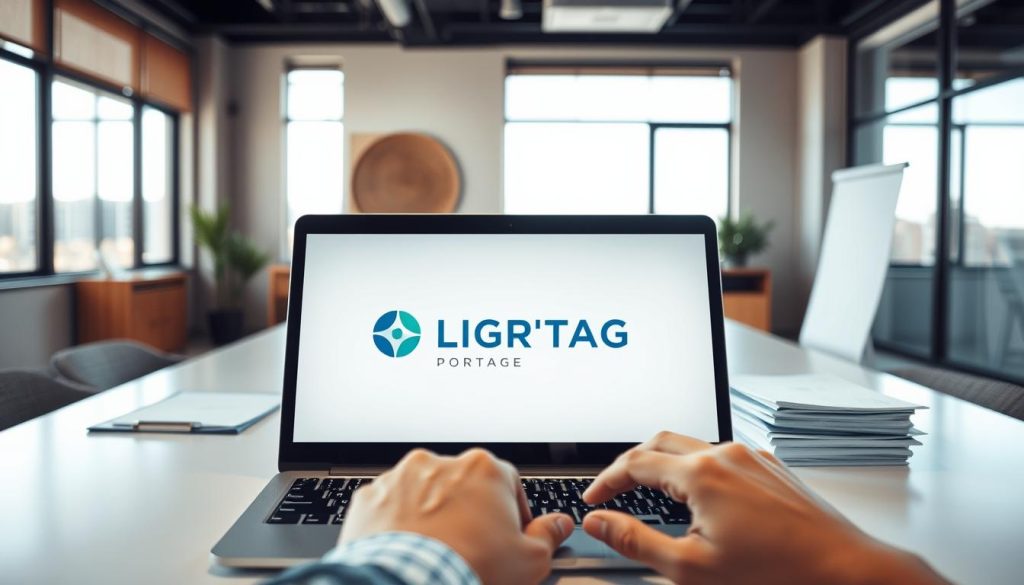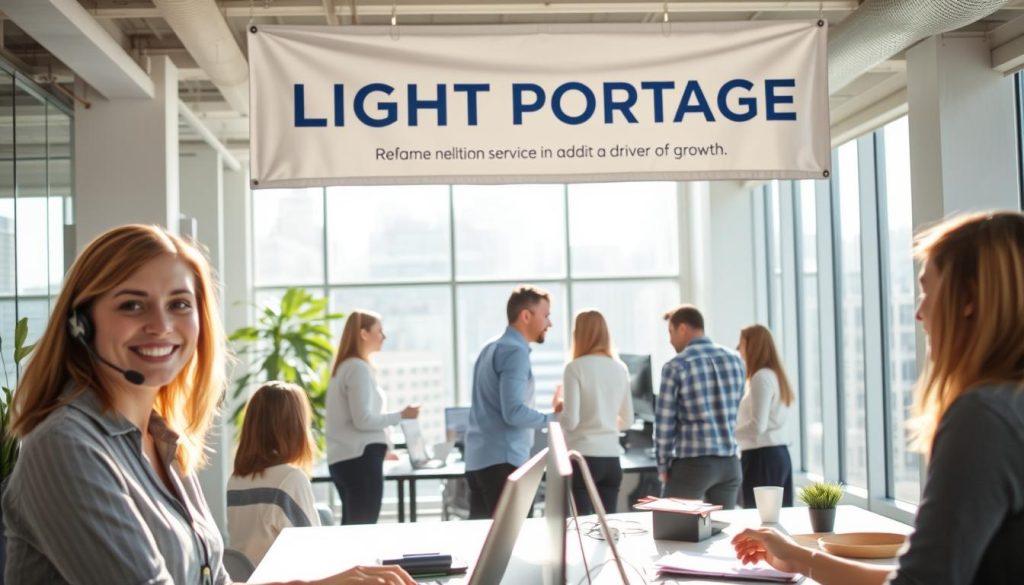One bad interaction can end a relationship. I remember a Parisian graphic designer who lost a steady client after a single missed deadline and no update. The client called their bank, a small firm, and then chose another provider. That moment changed the designer’s income for months.
We set the objective to help you build a dependable service client program that protects revenue and client relationships over the long terme. As an independent in France, each touchpoint matters. A clear approche makes it less likely a client sees a failure point that ends the relationship after one mauvaise expérience.
Your entreprise gains when you position help as part of your value, not an afterthought. Capture interactions from calls, email, chat, and social media: these are marketing signals that improve offers and reduce churn.
Table of Contents
Key Takeaways
- One bad expérience can cost your business; proactive care prevents churn.
- Craft a simple, clear approche to manage clients and timelines.
- Capture interaction data to inform marketing and prioritize services.
- Use lightweight tools and habits suited to solos and small teams.
- Transparent promises and timely updates build long-term trust.
Why Reliable Customer Service Matters in France Today
Today, a single poor interaction can undo years of trust for an independent professional. Research shows 85% of consumers stop after one bad expérience, and more than 70% of buyer-to-brand exchanges go through contact centers. That makes each touchpoint crucial.
Customer loyalty, retention, and long-term value
Reliable service client raises lifetime value by reducing churn tied to one unresolved problème. For solos and small équipes, clear promises and timely updates protect income and reputation.
From bad experiences to churn: risks on the long term
When interactions are rushed to hit efficiency targets, quality falls and clients leave. Balance speed with first-time résolution to keep satisfaction high.
- Use interactions as data: every exchange can feed données for marketing and product improvements.
- Contain risk fast: acknowledge the problème, set the next step and a timeline.
- Scale smart: simple escalation thresholds help an entreprise handle critical issues without heavy overhead.
Defining customer service, service client, and customer care
Knowing the difference helps you set clear expectations. Customer service is the operational delivery of help — advice, troubleshooting, and practical assistance both in person and remotely.
Customer care goes further. It blends empathy with follow-up: after-sales (SAV), maintenance, and proactive check-ins that protect clients from avoidable problèmes.
What “care” adds to classic relation client
Care adds intention and continuity to the transaction. It makes your work feel less transactional and more protective of the client’s outcome.
« A brief same-day acknowledgment or a how-to guide can change perception more than a lengthy apology later. »
Post-transaction support: assistance, SAV, maintenance
Design simple touchpoints: a short produit guide, a searchable FAQ, and a clear contact path. These reduce repeat problems and increase retention over the terme of the engagement.
Human-first, tech-enabled interactions
- Lead with a human response for nuanced interactions; use chatbots and forms for routine questions.
- Favor first-contact résolution and capture missing information to prevent future issues.
- Allow clients to switch canaux without repeating their story; summarize prior interactions for continuity.
Practical exemple: pair a one-page usage note with an FAQ and an email route that promises an acknowledgment within the same day. Small moments of care make a big difference for independents and their clientèle.
Connect service to your CRM and business data
When orders, preferences, and past contacts appear together, response time and clarity improve fast. A lightweight CRM unifies demographics, order history, and prior interactions on one screen. This reduces repeat questions and frees you to focus on outcomes.
Unified view: orders, interactions, preferences, and history
Link your inbox, phone, and forms so every client record shows orders and notes. With cloud telephony, calls pop in the CRM and AI can transcribe in real time. Agents spend less time searching and more time resolving.
Reducing repeats with cross-department continuity
Map a minimal processus — intake, triage, update, resolution, follow-up. Tag issues by type and impact so partners (accounting, logistics) have context without extra requests.
Instant feedback loops at the point of experience
Create short feedback prompts at delivery and first use. Capture quick ratings or comments and act before dissatisfaction grows. Automate confirmations and status updates from the CRM to keep clients informed.
| Area | Action | Benefit |
|---|---|---|
| Inbox & Phone | Integrate with CRM | One view; faster réponse |
| Call Transcripts | Auto-save notes | No repeat questions |
| Feedback | Short prompts at touchpoints | Early issue detection |
Tools like a shared inbox, CRM, and calendar form a mini contact center for independents. For guidance on managing context and continuity, see our tips on expert client management.
Channel strategy for independents: phone, email, mobile, and more
A clear channel map helps independents respond faster and keep complex issues from escalating. Choose which canaux you support and publish simple rules so a client knows where to go for each type of question.
Voice as a digital channel linked to CRM
Phone calls remain preferred for complex problems: 91% of professionals report this. Route calls through cloud telephony to your CRM so you see the caller, prior interactions, and open cases before you pick up.
Email for convenience, attachments, and written records
Email still ties with phone for usage. Keep templates for common replies, attach clear instructions for a produit, and preserve a written record. This reduces repeat questions and speeds response.
Messaging and social media for asynchronous support
Use SMS or apps like WhatsApp for short updates and scheduling. Social media is useful for quick triage; reply publicly with care, then move sensitive details to a private contact channel.
Video and visual remote assistance when in-person isn’t needed
Video solves setup and visual faults faster for many clients. Record short walkthroughs or run live sessions to guide a fix. This saves travel and lowers repeat contacts.
- Treat voice as digital: calls pop into the CRM with AI transcripts.
- Keep tools light: one inbox, one CRM, one number for small équipes.
- Publish a channel menu: when to call, when to email, and expected réponse times.
Self-service that works: FAQ, portal, community, and chatbots
A well-designed FAQ and portal let clients solve simple problems without waiting.
Why it matters: 75% of users prefer self-help for routine questions. A clear FAQ set reduces inbound contacts and protects your time.
Designing a searchable FAQ for fast answers
Build a prominent, searchable FAQ with the top 10–15 questions. Use numbered steps, screenshots, and short videos to guide the client through common procédures.
Customer portal basics for autonomy
A basic portal lets a client check order status, download documents, and update details. This lowers effort and shortens response time.
AI chatbots and smart handoffs
AI chatbots answer routine queries outside working hours and capture datos for clean human handoffs. Make limits clear and offer a direct contact path when problems need escalation.
User communities to scale solutions
Encourage a lightweight forum or private group for peer tips. Content from chats and community posts fournit données to refine your FAQ and spot trends early.
| Channel | Purpose | Primary benefit |
|---|---|---|
| FAQ | Fast answers to top questions | Deflects repetitive contacts |
| Portal | Order status & downloads | Lower effort, more autonomy |
| Chatbot | 24/7 routine assistance | Captures details for handoff |
| Community | Peer tips and examples | Scales solutions organically |
Measure search terms, click-throughs, and deflection rates. Update content when failed searches repeat. Small, focused self-help outils save time and protect your clientèle.
Balancing speed and quality in resolution de problèmes

Fast replies matter, but speed without clarity often creates more work than it saves.
68% of agents report the trade-off between speed and quality is the hardest part of their day. For solos and small équipes, the answer is simple: route well and automate wisely.
Omnichannel routing and simple workflows for solos and small teams
Define one intake queue across canaux and triage by urgency and impact. This ensures each client gets timely attention without duplicated work.
Create short processus checklists for common problèmes. Even a single person benefits: checklists raise efficacité and keep outcomes predictable.
Automation to guide steps and improve consistency
Use automation to prefill details, generate next-step tasks, and send status updates. Automated prompts cut handling time and keep clients informed.
- Agents doivent aim for first-contact résolution on straightforward issues.
- Keep SLAs practical (acknowledge within 2 hours, resolve standard cases within 2 business days).
- When workload spikes, pause non-urgent work to address critical problèmes.
| Action | Why it helps | Result |
|---|---|---|
| Single intake queue | Removes duplication across canaux | Faster gestion, clearer ownership |
| Short processus checklists | Standardizes responses | Higher efficacité, fewer repeats |
| Automation for tasks | Prefills and reminders | Lower handling time, better clarity |
| Root-cause capture | Data for improvement | Fewer repeat problèmes over time |
Balance speed with context: confirm understanding before acting. After each résolution, send a brief recap and next steps to build confidence and reduce follow-up questions.
Human skills that differentiate your service clientèle
Human skills shape the moments that turn a routine interaction into lasting loyalty.
Interpersonal skills matter first. Strengthen compétences in active listening and empathy so each client feels heard. Use positive, precise language that names the issue and outlines next steps.
Product knowledge and clear answers
Keep produit and service updates current. Schedule short micro-trainings after each release so your réponse is accurate the first time.
Technical fluency for efficient handling
Agents must know tools and shortcuts. Technical fluency reduces handling time and frees attention for the client.
« Training that blends role-play with quick reference notes builds confidence faster than long manuals. »
- How-to library: screenshots, checklists, and short videos for consistent answers.
- Role-play drills: practice billing, delays, and tricky questions to sharpen tone and pathways.
- Case swarming: lightweight peer collaboration for complex problèmes; document the path for future speed.
| Skill area | Practice | Benefit |
|---|---|---|
| Interpersonal | Active listening drills | Fewer escalations; higher satisfaction |
| Product | Micro-trainings post-release | Accurate first responses |
| Technical | Tool shortcuts & templates | Lower handling time |
Close every case with a short recap: what was done, what to watch for, and how to reach you. This small habit reduces repeat contacts and builds long-term confiance in your clientèle.
From cost center to growth: turning service into revenue

Turn routine interactions into measurable growth by treating each resolved issue as a business signal. After a tidy resolution, the follow-up is an advisory moment where you can add value without pressure.
Identifying upsell and cross-sell moments after resolution
Position post-resolution talks as helpful advice. Once a client’s need is met, suggest adjacent services that genuinely add value over the long terme.
Use your CRM to flag patterns: repeated how-to questions or timing cues can indicate a training add-on that clients will welcome.
Using support insights to inform marketing and product decisions
Interactions generate données and informations. Feed those into marketing and product planning so your entreprise invests where issues are most frequent.
- Personalize offers with issue type and order history, not generic pitches.
- Segment clients by usage to build transparent bundles (starter, standard, premium).
- Track simple mesure: offer acceptance, repeat purchase, and impact on satisfaction.
« Over the terme, a caring approach to assistance peut être a more reliable path to succès than hard selling. »
Respect consent and timing: offers must follow a successful resolution and remain optional. When aligned, support becomes a place of trust that grows lifetime value.
Measure what matters: satisfaction, effort, and SLAs
Measure what truly moves loyalty: pick a small set of indicators and track them consistently.
Start with a compact measurement stack: CSAT after cases, NPS quarterly, and retention rate. These three figures give a clear view of whether your service client work protects revenue and trust.
CSAT, NPS, and retention as core indicators
Use brief surveys that take seconds to complete and include a free-text field. Automate prompts at the point of experience — right after a call or delivery — to capture fresh feedback.
Customer effort and friction across canaux
Map steps clients take for common tasks. Count clicks, messages, and handoffs. Where a pathway has many steps, reduce friction with clearer information or a better processus.
Service-level performance for response and resolution
Set SLAs for acknowledgement, first response, and full résolution. Review weekly performance and compare SLAs to analytics to spot bottlenecks.
« Quick, targeted feedback at the point of experience fixes issues before they become churn. »
- Survey stack: CSAT post-case, NPS quarterly, retention tracking.
- Effort tracking: count steps by channel and remove friction points.
- SLA routine: measure acknowledgments, first responses, and final résolution.
- Data use: analyze transcripts and case tags to find topics that lower satisfaction.
| Measure | What to track | Action |
|---|---|---|
| CSAT | Case-level score + comments | Update FAQ or processus for common failures |
| NPS | Loyalty trend quarterly | Prioritize services that improve retention |
| Effort | Steps per task across canaux | Redesign path, add clearer réponses |
| SLA | Ack, first reply, resolution time | Adjust staffing or automation to meet targets |
Document a backlog playbook for when metrics slip: a clear correction processus keeps quality steady during peak periods. Share monthly benchmarks with your small team to build accountability and celebrate gains.
Tip: feed operational données into a dashboard that compares average handle time with first-contact résolution. Optimize for outcomes, not speed alone.
For guidance on quality and expert standards, see our note on quality of our experts.
Conclusion
Small, repeatable commitments—clear timelines and calm updates—compound into measurable succès.
Reliable service client is a strategic asset for independents. It protects revenue and relationships over the long terme by reducing churn and encouraging positive word of mouth.
Adopt a human-first approche that is tech-enabled: simple workflows, shared données, and visible promises make responses faster and clearer for each client.
Use closed-loop habits to fix questions quickly and to implement solutions that stop repeats. Invest in compétences, product knowledge, and steady team alignment so your entreprise scales with confidence.
Start lean: pick two channels, publish an FAQ, set response times. Every touchpoint is an opportunity to reassure, educate, or add value—this is where lasting loyalty takes place.
FAQ
What is reliable customer service for France’s independent professionals?
Reliable customer service means providing consistent, timely, and empathetic support tailored to freelancers and micro-entrepreneurs in France. It combines clear processes, accessible channels, and measured outcomes so you can protect reputation, reduce churn, and focus on your craft.
Why does reliable support matter for independents in France today?
In a competitive market, responsiveness and quality interactions build loyalty and long-term value. Good support reduces negative experiences that lead to churn and helps you maintain steady revenue and referrals.
How does “customer care” differ from classic relation client?
Care goes beyond transactional replies. It anticipates needs, follows up proactively, and uses empathy to resolve issues. This human-first approach strengthens trust and encourages repeat business.
What should post-transaction support include?
Post-transaction support must cover assistance, after-sales service (SAV), and maintenance where relevant. Offer clear escalation paths, documented procedures, and easy access to records so problems are solved quickly.
How do human-first, tech-enabled interactions work?
Combine skilled agents with tools like CRM, knowledge bases, and automation. Let humans handle nuance and empathy while technology manages data, routing, and repeatable tasks for efficiency.
How do I connect support to my CRM and business data?
Integrate communication channels with your CRM to capture orders, interactions, preferences, and history in one view. This unified record shortens resolution time and improves personalization.
How can cross-department continuity reduce repeated contacts?
Share case notes, tags, and ownership across teams. When everyone has the same context, customers avoid repeating their story, which lowers effort and increases satisfaction.
What are instant feedback loops at the point of experience?
Collect brief surveys and in-interaction signals immediately after resolution. Use that input to correct issues fast and feed product or process improvements to your teams.
Which channels should independents prioritize?
Prioritize a mix: voice for complex, immediate matters; email for records and attachments; messaging and social for asynchronous contact; and video for visual troubleshooting when needed.
How do I link voice interactions to my CRM?
Use telephony integrations that log call metadata and transcripts into the CRM. That ensures conversations are searchable and tied to the client record for follow-up.
When is email the best option?
Use email for formal confirmations, attachments, and detailed instructions. It preserves a written trail and suits matters that do not require instant back-and-forth.
How do messaging and social channels fit into a support strategy?
They provide fast, low-effort touchpoints for updates and simple fixes. Route messages into your workflow so nothing is missed and hand off to an agent when complexity rises.
When should I use video or visual remote assistance?
Use remote video when a visual inspection or guided walkthrough resolves issues faster than text or phone. It reduces travel and speeds diagnosis for technical or product problems.
What makes a searchable FAQ effective?
Clear, concise Q&A, logical categories, and good search indexing. Use real phrasing clients use, update regularly, and link answers to deeper guides or the portal when needed.
What are the basics of a customer portal that promotes autonomy?
A portal should let users view orders, download invoices, submit and track tickets, and access personalized guides. Lowering effort here reduces inbound queries and improves satisfaction.
How can AI chatbots help without frustrating users?
Use bots for routine queries and to guide users to resources. Ensure seamless escalation to a human and keep handoffs smooth to preserve trust and avoid dead ends.
Can user communities scale problem-solving organically?
Yes. Well-moderated forums and peer groups surface practical solutions, reduce support load, and provide social proof that reinforces your offering.
How do I balance speed and quality when resolving problems?
Use omnichannel routing, simple workflows, and automation for triage. Reserve expert attention for complex cases while ensuring quick acknowledgements and clear SLAs.
What automation improves handling time without harming quality?
Guided scripts, pre-filled forms, and knowledge prompts that assist agents. Automation should reduce repetitive work while keeping decisions and empathy human-led.
Which interpersonal skills truly differentiate a support team?
Active listening, empathy, and positive language. These skills calm tense interactions and make solutions feel personalized and reliable.
How important is product and service knowledge for agents?
Essential. Up-to-date knowledge minimizes errors and increases first-contact resolution. Invest in ongoing training and accessible knowledge bases.
What technical fluency should agents have?
Comfort with CRM tools, ticketing systems, and basic troubleshooting. Agents should also know how to interpret data and follow escalation processes efficiently.
How can support become a revenue generator?
Identify upsell and cross-sell opportunities during or after resolution. Use insights from interactions to inform marketing offers and product improvements.
What metrics should independents track to measure impact?
Track satisfaction (CSAT), net promoter score (NPS), retention, customer effort, and SLAs for response and resolution. These indicators show both quality and business outcomes.
How do I measure customer effort and friction across channels?
Combine survey input with behavioral data—repeat contacts, time to resolution, and steps in a workflow. Lower effort correlates with higher loyalty and fewer escalations.
What are reasonable SLAs for small teams?
Define tiered SLAs: immediate acknowledgement within minutes for urgent issues, same-business-day response for high priority, and clear timelines for resolution based on complexity.





